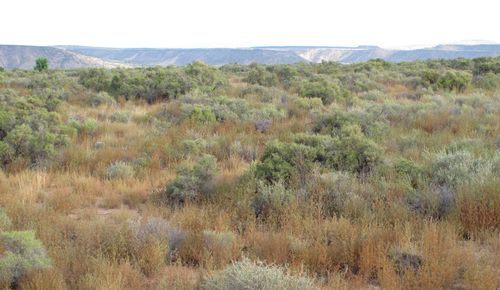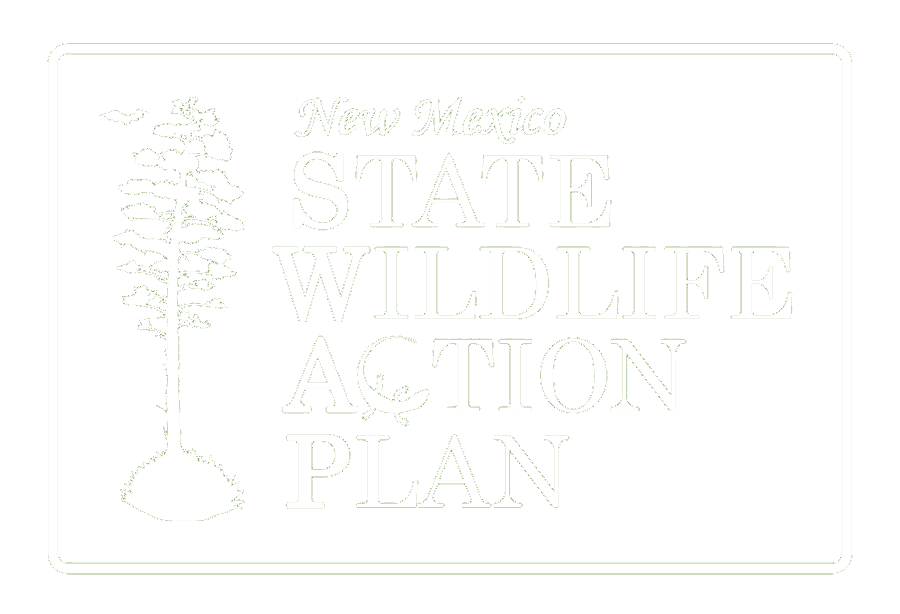
SWAP Habitat
Intermountain Saltbush Shrubland
NVC Name
Great Basin Saltbush Scrub (M093)
SWAP General Vegetation Type
DESERT GRASSLAND and SCRUB
The Intermountain Saltbrush Shrubland [M093] occurs at 1,520-2,200 m (4,985-7,220 ft) elevation in the Colorado Plateaus ecoregion, but extends southward into the Arizona/New Mexico Mountains and High Plains and Tablelands ecoregions. This shrubland is characterized by an open to moderately dense cover of shrubs (<2 m (7 ft) tall) with a sparse herbaceous layer composed of perennial bunchgrasses. Dominant shrubs may include fourwing saltbush, shadscale saltbush (Atriplex confertifolia), cattle saltbush (A. polycarpa), and greasewood (Sarcobatus vermiculatus). Sometimes stands are co-dominated by big sagebrush, winterfat, or species of jointfir (Ephedra spp.) and wolfberries (Lycium spp.). Medium-tall and short perennial grasses include Indian ricegrass, blue grama, saltgrass (Distichlis spicata), needle and thread, western wheatgrass (Pascopyrum smithii), and alkali sacaton (Sporobolus airoides). Forb cover is generally sparse.
Sites can be found on all aspects of valley bottoms, alluvial and alkaline flats, mesas and plateaus, playas, drainage terraces, washes and interdune basins, bluffs, and gentle to moderately steep sandy or rocky slopes. Substrates are typically saline, alkaline, fine-textured soils developed from shale or alluvium. Infiltration rate is typically low. Soils are shallow to moderately deep, poorly developed, and the product of a semi-arid climate. Their surface often is very barren, and interspaces between the characteristic plant clusters are commonly covered by a microphytic crust.
